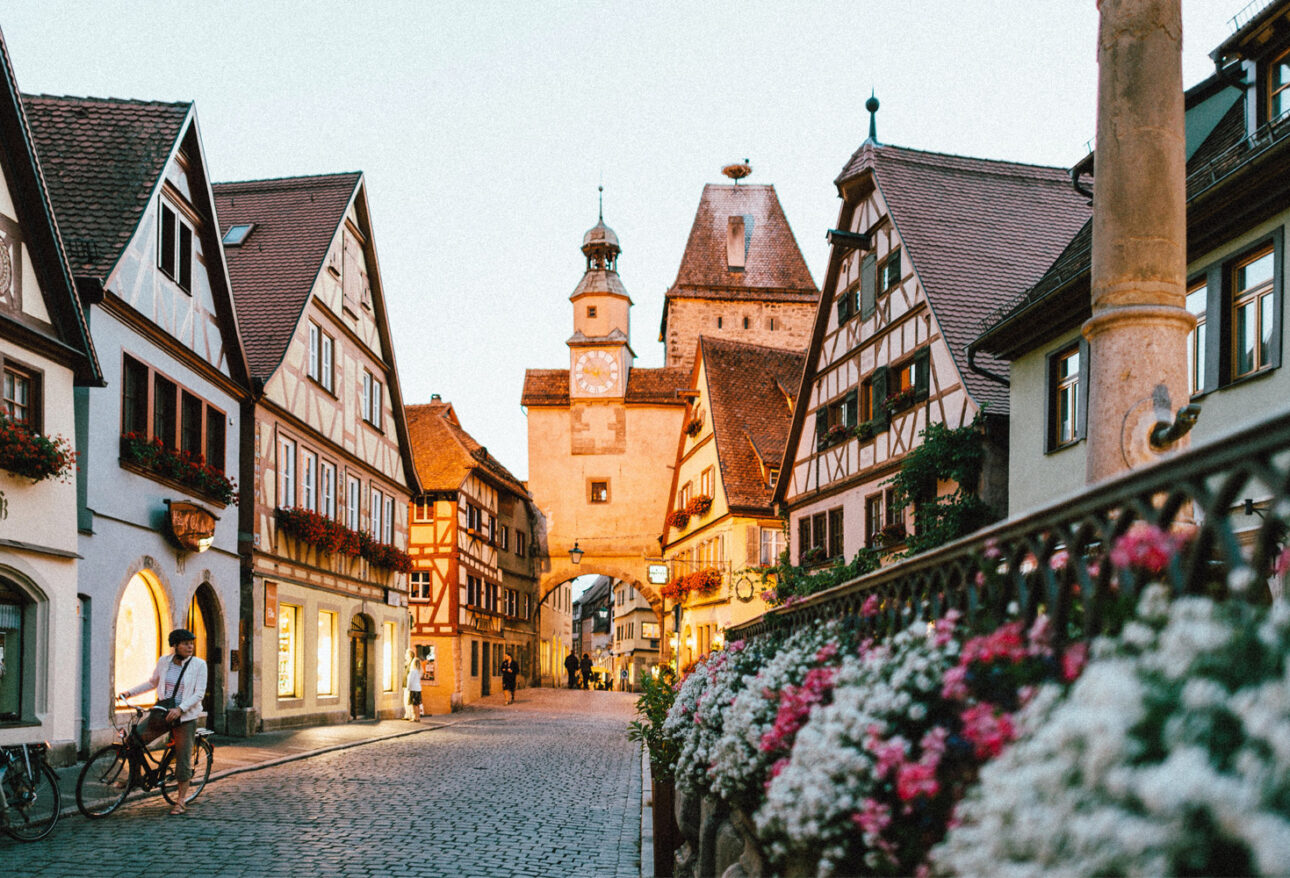Over the last 60 years, the picturesque medieval city of walled construction has consistently been in the top ten German tourist draws. As part of the official German National Tourist Board’s vote, Rothenburg ob der Tauber has twice made it into the Top Five of Germany’s Best Travel Destinations. Rothenburg welcomes foreign tourists and German visitors alike with nocturnal tours, “Snowballs,” and numerous events throughout the year for both groups.
It is rare in the world for such a large number of original buildings to survive from the Middle Ages, as you can find here. As you walk through Rothenburg ob der Tauber’s gorgeous old town with its majestic buildings, hidden fountains, and wine taverns, you feel as if time has frozen. Despite its small size, Rothenburg is a city with a rich history and a wealth of museums, churches, abbeys, and monuments. You will need ample time to ensure that you will see all around.
About Rothenburg ob der Tauber
Rothenburg ob der Tauber can be described as a reflection of history. The most exciting way to experience history is to become sensually involved in it and integrate all of our senses: touch, taste, sound, and sight. And Rothenburg is the most suitable place to experience history in this way because of the variety of activities that will inspire you to immerse yourself in its colorful history.
In addition to exploring the scenic Romantic Road, one of the most popular and possibly the most beautiful roads in Germany, it is also the perfect place to enjoy the delicious food and stunning scenery straight out of a fairytale.
Käthe Wohlfahrt’s Christmas Village is another nostalgic place in Rothenburg. You’ll never find a better place to visit the festive spirit than at the largest Christmas shop in Europe, which is open all year round.
Rothenburg’s Spitalviertel district is also worth a stroll, especially if you pass one of the preserved medieval town gates or visit one of its beautiful churches. One of the most outstanding stone carvings in St. James’ Church showcases Christ and the sleeping apostles.
It’s also noteworthy that the beautiful St. Wolfgang’s church at the Klingentor gate is also very well decorated. Rothenburg ob der Tauber is most certainly a place to delight everywhere you turn, as it is exciting and entertaining to explore. After time spent touring and marveling at what you see, you can sip a drink and satisfy your hunger in a cozy inn.
All year long, a trip to Rothenburg is a pleasure. In the darker Fall and Winter months, there is still plenty to do. During the first week of November, “Fairytale Magic,” “Maerchen Zauber,” and Advent Reiterlesmarkt all coincide. And the Valentine’s Day holiday Romanze is also available for imaginary, touching, and romantic experiences.
Rothenburg celebrated the 400th-anniversary outbreak of the 30 Years War in 2018, bringing this part of its history even more into focus than before. Rothenburg still hosts reenactments of the warring factions so that visitors can experience the tumult and turmoil today.
As part of its commemorative celebration for the significant commemoration of 1631, the Meistertrunk Historical Society brings a theatrical take on the legend of Rothenburg’s salvation to life. It has been designated as an integral part of Bavaria’s “Immaterial Cultural Heritage” since 2015 due to its fine-quality production.
Also, in September 2019, the Imperial Festival included a particular emphasis on the 30-year war. The Stöberleinsbühne was right on Rothenburg’s town walls and hosted historical bands performing music from this period. Furthermore, the show was free for all to attend.
Rothenburg’s Imperial City Festival is held on the first weekend of September every year. A 500-year-old festival relieving Rothenburg’s history from 1274 to 1802 takes place during the Festival.
Among the many delights are the knights’ encampment, the “Fahrendes Volk” (camp followers), the merchants, peasants, and the royal court in this presentation, featuring realistic animations. There will also be fireworks and public theatrical performances on the market square on two evenings of the particular program.
Rothenburg is a landscape garden formed of the private gardens of Rothenburg’s old city and the castle gardens, which combine to create what one might call a heaven garden of Rothenburg itself. In addition to these exhibitions, the Medieval Crime and Justice Museum and Rothenburg Museum will offer special events throughout the year.
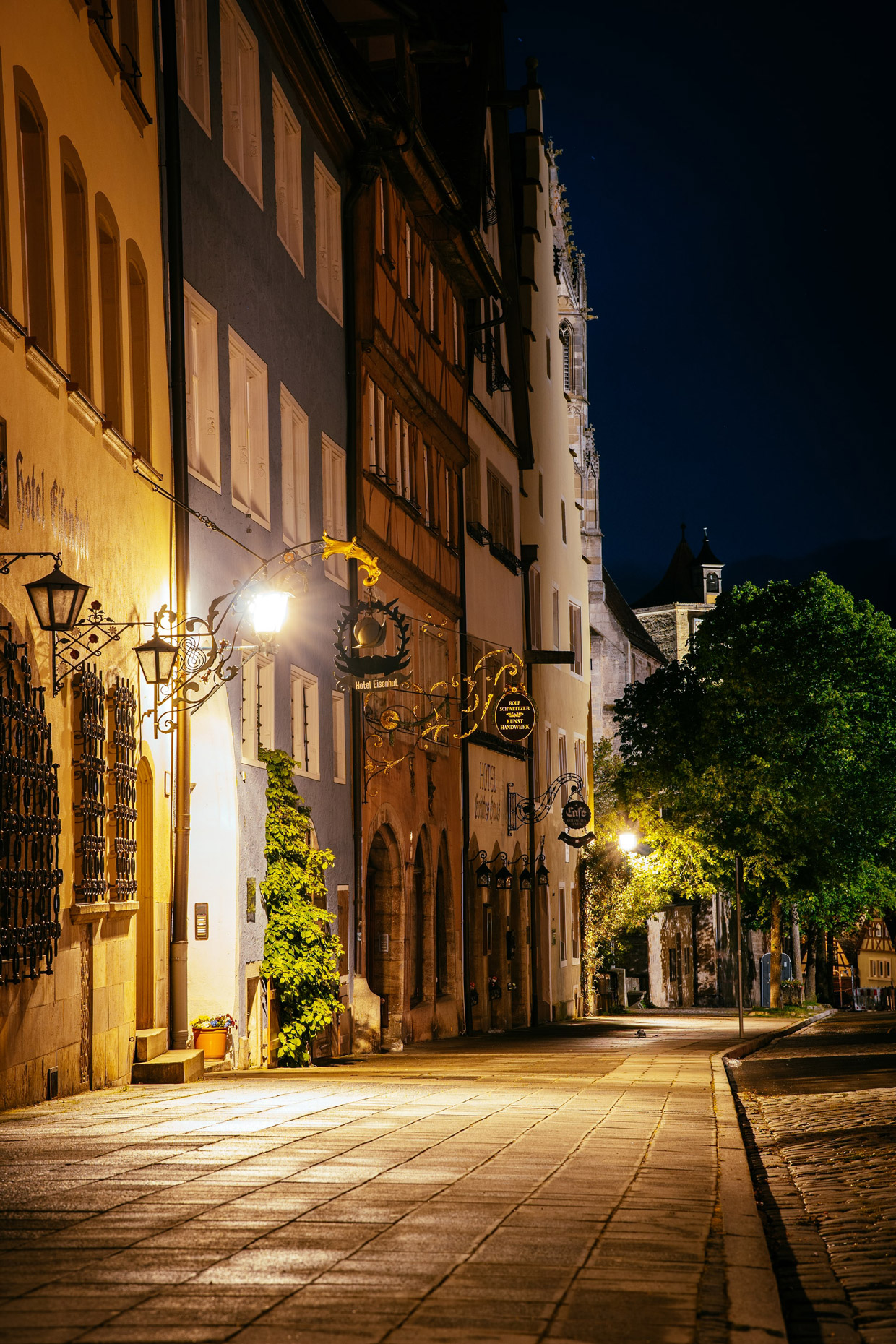
10th Anniversary of the Wine Festival in Rothenburg: Fine Gastronomy and Wine Culture
During a walk on one of its cobblestone streets, it is possible to hear the echo of your steps along narrow passages and quaint alleyways.
The history of winemaking in Rothenburg stretches back centuries. For wine production in the area, grapes have been grown since the early Middle Ages. The Tauber River has vineyards planted alongside its slopes, and one winery offers tours of these vineyards and tastings.
A five-day annual festival, the Rothenburg Wine Festival, is the southernmost growth of Germany’s Franken wine region. For the 10th consecutive year, Rothenburger Wine Village has been certified by the food and wine review “100 Genussorte Bayern” – listing Bavaria’s finest 100 traditional, top-rated restaurants featuring regional cheese. Fine dining and excellent wine are sure to satisfy any gourmet.
Nine Rothenburg’s top gastronomic establishments have formed a wine-culinary initiative in response to the high-quality demands demanded by the Weindorf. A fine dining experience that celebrates regional products and wines sourced from the region (Taste of the Tauber) is the initiative’s name. Rothenburg offers visitors delicious culinary experiences through the pairing of fresh, seasonal dishes with Franconian wines.
The “Franconian Temptation” consists of three appetizers accompanied by three different pours of Franken wine, an amuse-bouche. At partnered restaurants, you can enjoy this experience for 20 Euros. In addition, guests are invited to try various Rothenburg wines and foods at each of the nine participating establishments.
Visiting Rothenburg Ob Der Tauber During the Year-Long Special Exhibition From 2019 to 2021
How did Rothenburg ob der Tauber become such a great attraction for artists and architects in the late 19th century? The town’s influence on the English Garden City Movement and famous painters like Elias Bancroft will be showcased from 2019 through 2021.
Both in geomorphology and topography, Rothenburg ob der Tauber had a picturesque natural environment by the mid-19th century. The dramatic, which was thus conceived by the British artists (architects and painters), has been modernized by the city.
More than a century of art reflection had gone into the Anglo-Saxon art concept of “the picturesque.” Indeed, one might say that the picturesque, as explicitly expressed in painting, landscape arts (landscape gardening), and architecture is England’s most outstanding contribution to modern art.
Many British artists, such as Barry Parker (1867–1947) and Raymond Unwin (1863–1940), were drawn to the picturesque elements of the Rothenburg landscape. As you follow the road through the city, you will see the city’s architecture, like the effects of solid contrasts, uneven streets, irregular house facades, exciting and more varied ensembles of architecture like the market square.
This property, although derelict, has a kind of Gothic charm to it that is a mix of natural and artificial elements. This is especially true of the views into the Tauber valley below the vineyard “An der Eich” from the terraces.
Rothenburg ob der Tauber will be portrayed as a rural and urban landscape during the three Theme Years 2019-2021. The Rothenburg Museum will be showcasing Rothenburg townscapes, starting with the early modern period, to the present day, in addition to an exhibition about British painters from the late nineteenth century, which will be shown at the Medieval Crime Museum.
Rothenberg will display an exhibit describing how it influenced Raymond Unwin’s English Garden City Movement. As part of the Rothenburg Garden Projects, hidden garden treasures from local citizens will be discovered. From Künstlerbund and Kunstkreis, interpretations of Rothenburg’s picturesque setting will be presented as well.
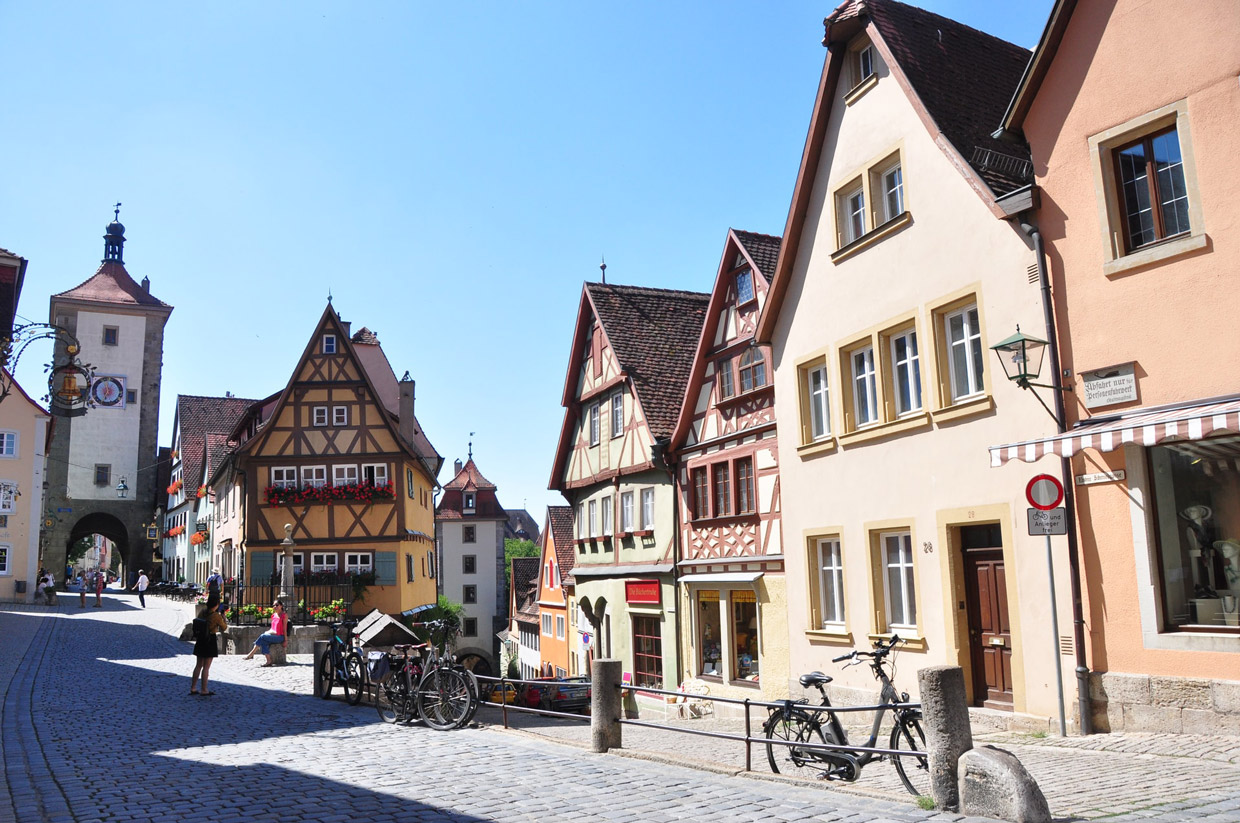
The Pilgrimage Wayside and Crafts in Rothenburg
The city is also located on the ancient pilgrimage route (the Via Romea), linking Stade (near Hamburg) to the Holy City Rome and six Jacobean pilgrimage routes to Compostela in far-away Spain.
St. James Church receives over 1,000 pilgrims every year. Besides the traditional “snowballs,” visitors can enjoy other local handicrafts like those that can still be found in the bakeries in Rothenburg ob der Tauber until today. Visitors to the manufacturers’ shops will find delectable chocolate, fashionable clothes, and miniature illuminated houses.
The Fairy Tale Magic of Rothenberg Will Take Place From November 5th-20th, 2021
At the FairyTale Magic Week in Rothenburg’s old quarter, the city will be transformed into a romantic backdrop for fantasy tales. Among the offerings are guided tours, theater plays, concerts, and readings. Throughout the year, visitors will be able to attend events centered around fairy tales.
Some restaurants and retailers are participating in Fairy Tale Walk, which includes creative promotions. Moreover, hotels will become resting places for visitors.
The event consists of telling or reenacting fairy tales, as its name implies. However, anyone who assumes that Fairy Tale Magic automatically equates to good old-fashioned family fun is mistaken.
Donkey Walk will offer children’s classics, as well as programs for adults who love fairy tales. The show will present a wide range of stories, ranging from classics like the Brother Grimm story to more contemporary stories.
Fairy Tale Magic in 2019 attracted 2000 visitors to the city. In conjunction with the Fairy Tale Magic festival, Rothenburg hotels offer special promotions and deals for Fairy Tale fans.
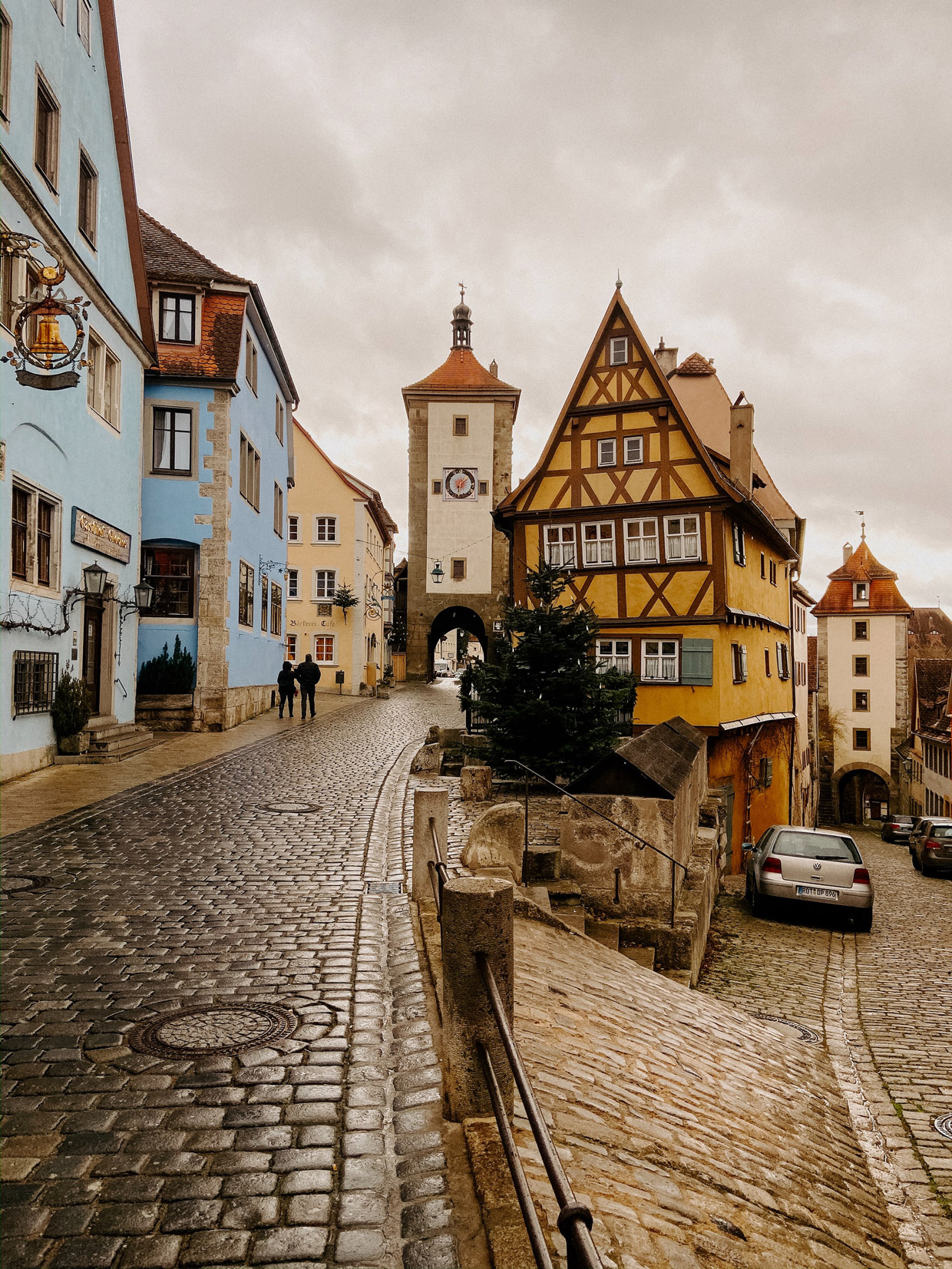
Hiking Weeks in Rothenburg on June 19th – 27th and Oct 9th – 17th
A Hiking Week begins at Rothenburg and ends in the surrounding area. The old city is usually the meeting point with the guides. Hikes are entirely free to take part(unless otherwise specified in the program).
With Father Gußmann, you can walk the Way of Saint James from Rothenburg to the surrounding area, go on expert forest tours to learn about the forest and your local pub, and take a hike on one of the numerous hiking trails around Rothenburg. Hiking Weeks present a great deal of variety. Hiking every day, at the very least!
It is possible to hike 13 different routes in Rothenburg ob der Tauber. At Rothenburg Tourism Office, you can obtain a hiking map.
Take a short stroll along Rothenburg Tower Trail while visiting during the Hiking Weeks. Following this path takes you around the walls of the city. It’s nice to have such a great alternative to the rain when it’s raining outside.
“Master Draught” Historical Festival
Rothenburg ob der Tauber hosts the Historical Meistertrunk Festival throughout the old city. In 2014, UNESCO inscribed the Festival on its German list of intangible cultural heritage. The two main venues are the Festwiese and the Kaisersaal.
Experience old-fashioned fun during the Pentecost weekend festival when the story of how the city was conquered by General Tilly and saved from destruction by Mayor Nusch is retold. Nusch reportedly impressed the enemy general by drinking three and a half liters in one go. Many historical groups tell the story throughout the city, notably in the Kaisersaal.
On Pentecost weekend, catch two performances of the historical Shepherd’s Dance. In addition, families can enjoy historical games with Kurzweyl 1631. There is a schedule in the program that contains the precise start times.
Illumination – Shopping – Culinary Experiences at the Rothenburg Christmas Market
It is a winter fairytale every year when medieval Rothenburg transforms into a winter wonderland. Reiterlesmarkt in Rothenburg has been around for some 500 years, making it one of the oldest Christmas markets.
It is hard to find a better setting for your holiday shopping than the well-decorated Christmas market booths amidst a Middle-Ages fairytale backdrop.
During the Christmas season, narrow streets with snow-covered roofs and the scent of mulled wine from “White Franconia” put you in a festive mood. Then don’t let this opportunity pass: Mulled white wine and a delightful treat.
Prehistory sheds light on Reiterle’s origins. He used to be a feared figure, but people of all ages now look forward to his return.
Shepherd’s Dance on Pentecost, a Historic-Cultural Event in Imperial City
Marketplatz hosts the historical Shepherds Dance. Dancers change when the shepherd blows the whistle, which signifies the dance is a figure dance. Before a dance can take place, it must be reenacted historically.
A memorable city holiday has been celebrated in Rothenburg by the Shepherds Guild since 1517. At that time, music, drinking, eating, dancing, and even dancing in public were all part of the celebration. A Rothenburg shepherd’s dance tradition was revived in 1911.
The Shepherd Church (a.k.a. St. Wolfgangskirche) is located at the Klingentor as well. In addition, a small museum reflecting the significance of the Shepherds Guild of earlier days is located on the premises of the Historical Shepherds Dance Association.
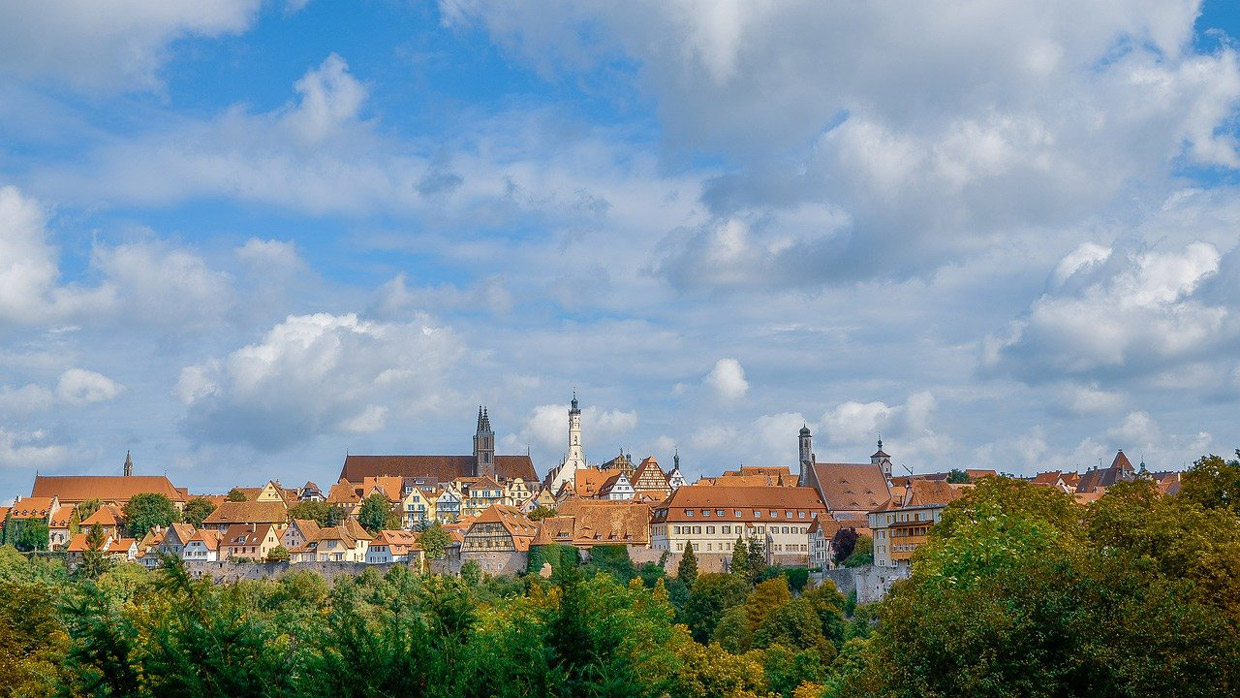
Rocking Rothenburg – The Taubertal Festival August 12th – 15th
The Taubertal Festival draws more than 15,000 attendees every year! The Taubertal Festival is held in the valley of the Tauber, across from the castle gardens. Stages are set up around Eiswiese toward Detwang.
Artists performing rock, alternative, and hip-hop are featured during the Taubertal Festival. However, mainly young people attend the Festival and enjoy seeing Rothenburg’s old city from the festival grounds.
The intimate venue has hosted notable artists including Fantastische Vier, Iggy Pop, Pink, Jan Delay, and Placebo. Volker Hirsch, the Festival’s founder and event manager, insisted from the start on creating a unique atmosphere that guarantees a truly “live” experience.
Those without tickets and those who wish to enjoy some fresh air can find a perfect spot in the Unter den Linden beer garden and at Steinbruch’s bar. Enjoy a relaxed atmosphere, and no ticket is required!
The Rothenburg Medieval Crime and Justice Museum
The Rothenburg Medieval Crime and Justice Museum in Rothenburg Is Europe’s Largest Museum of Legal Rights. Gruesome, frightening, or just very informative. Described like this, the Medieval Crime and Justice Museum of Rothenburg ob der Tauber have a unique focus on medieval criminal justice. This charming hotel is located in a building that formerly housed the Johannis Cloister. The hotel is directly adjacent to the St. Johannis Church.
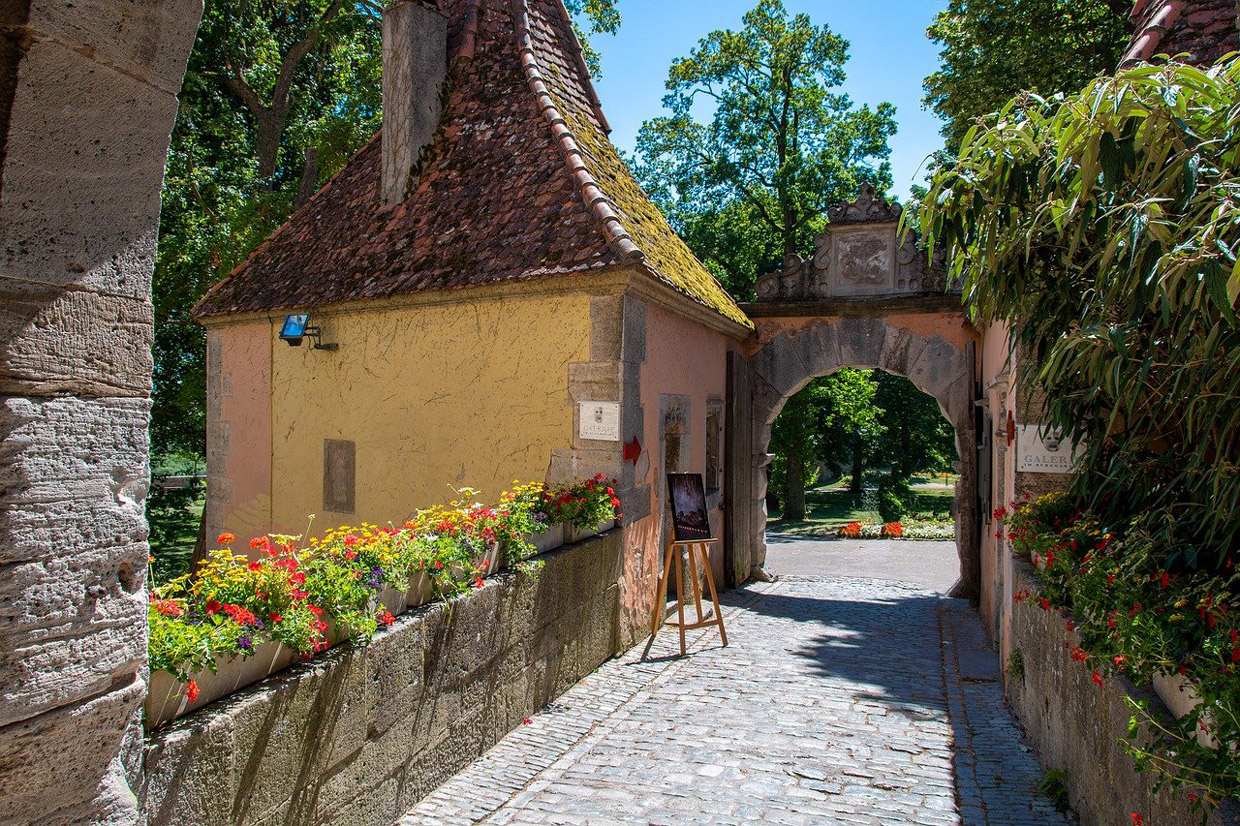
A Historic Area
Rothenburg has become synonymous with Germany’s Romantic Road, and for Germany itself, because of its charming streets and squares surrounded by well-kept half-timbered houses. Having walked through Old Town before, its familiar landscape may make you feel as if you are back home.
There are plenty of idyllic scenes here, including the charming old houses painted brightly with vibrant colors, in addition to the town hall (Rathaus). Christmas is a time when many markets are found in early November or in December.
If you want to experience the Old Town fully, book a room at one of the many hotels located nearby and enjoy the nightlife. Until you find yourself out of the crowds (most tourists only come here for a day trip), you will have much of this remarkable area to yourself.
The Rathaus (town hall) in Rothenburg
The imposing Rathaus (Town Hall) dominates the Marktplatz at its center, which is one of the most beautiful in Southern Germany. With its 13th-century origins, the oldest part of this majestic building faces Herrngasse. You’ll also find the 50-meter-tall 16th-century tower above the Old Town, from which you will enjoy beautiful views.
The Rathaus is located facing the market; this section contains the Imperial Hall, which continues to host concerts and theatrical performances today. It’s also worth mentioning that the old clock with its quaint mechanical figures and the former Council Tavern (Ratstrinkstube) were added in 1466.
A View of the Old Town Walls
Walking the Old Town Walls of Rothenburg for about half an hour is one of the most popular things to do in Rothenburg. Spitaltor, a massive gatehouse dating back to the 1500s, makes for an excellent place to start this fascinating and beautiful walk. On the way, take a moment to enjoy the view as you head toward Rödertor, which is equally impressive.
A short walk leads to the Klingentor and St. Wolfgang’s Church, a 15th-century church dating back over a thousand years. The walls along the city square have 42 gatehouses and towers, so allow enough time during your walking tour to see most of them. In addition, several historical landmarks in the town are included in the English-language guided tours available at the visitor center.
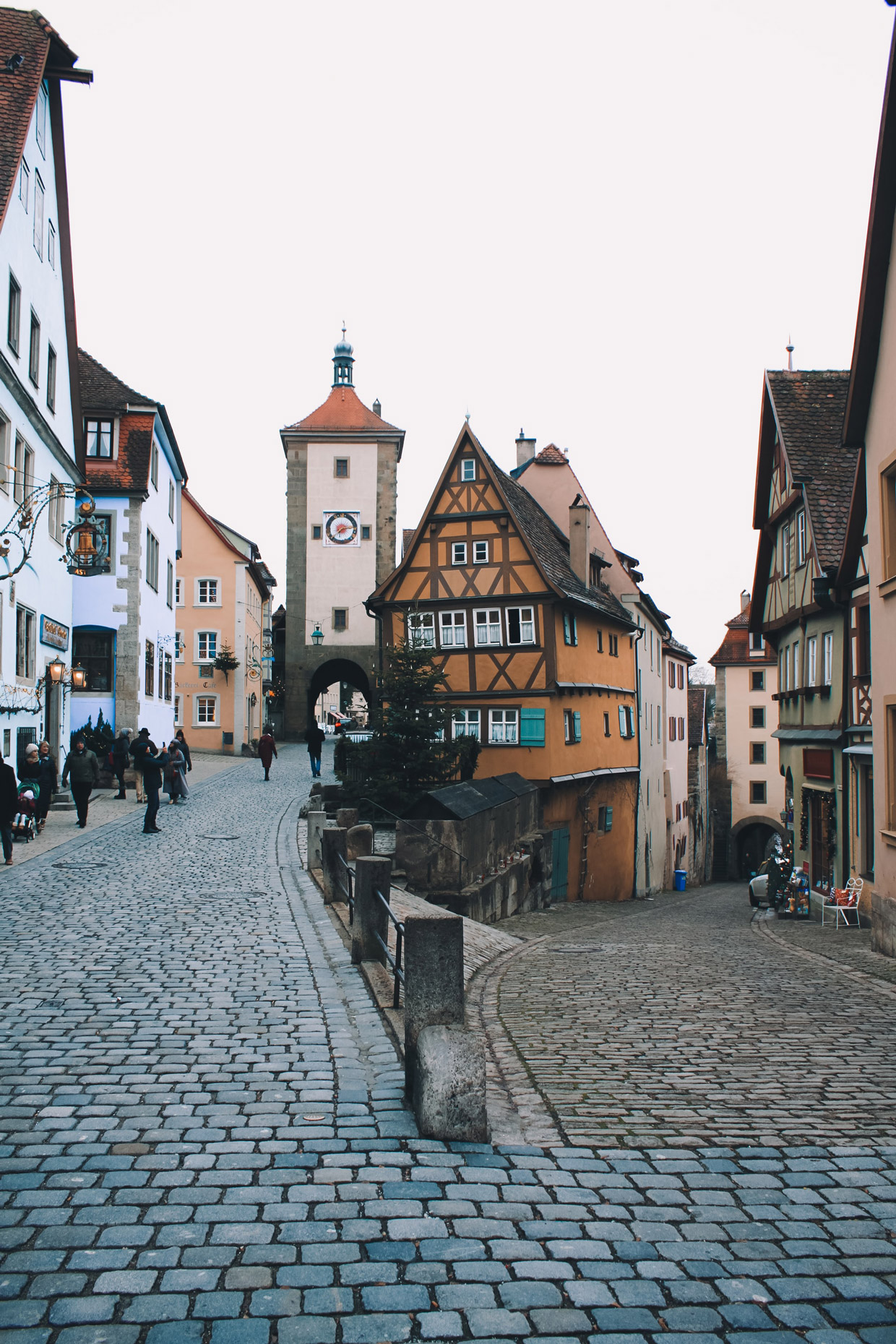
Plönlein
The town is picturesque and reminiscent of a fairytale setting, and Plönlein is the most picturesque part of such an idyllic town. But, as the name implies, Little Square is nothing more than a crossroads.
You can see both slanting in opposite directions by standing near the tall, narrow half-timbered building that divides the two streets. One slope to the Siebers Tower, and the other slopes to the Kobolzeller Tower. These two towers are from the early 13th century. You may as well take a selfie while there!
The Castle Gardens (Burggarten)
In Rothenburg, you will find many parks and gardens as well as beautiful old architecture.
It is hard to beat the spectacular Castle Gardens (Burggarten). The gardens, which occupy the site of a castle obliterated in an earthquake in 1356, provide a charming view of the Old Town of Salzburg and the famous Double Bridge farther down the Tauber Valley.
An eight-piece sculpture set representing the four seasons and four elements decorates the geometric flower beds laid out between the 17th and 18th centuries.
It is noteworthy that the old castle has a monument to the 14th-century mayor Toppler and a monument to the Hohenstaufen dynasty, which once ruled the area.
Baumeisterhaus, the House of Master Builders
The Master Builder’s House (Baumeisterhaus) is located at No. 3 of the Schmiedgasse, a fine old street leading south from the Marktplatz. This magnificent Renaissance-style building dates back to 1596 and is now an upscale hotel and restaurant.
In this building, Rothenburg’s Master Builder Leonard Weidmann had his office and home. He carved dragon figures and statues representing the seven cardinal virtues and the seven deadly sins into the house, which is a testament to his skills.
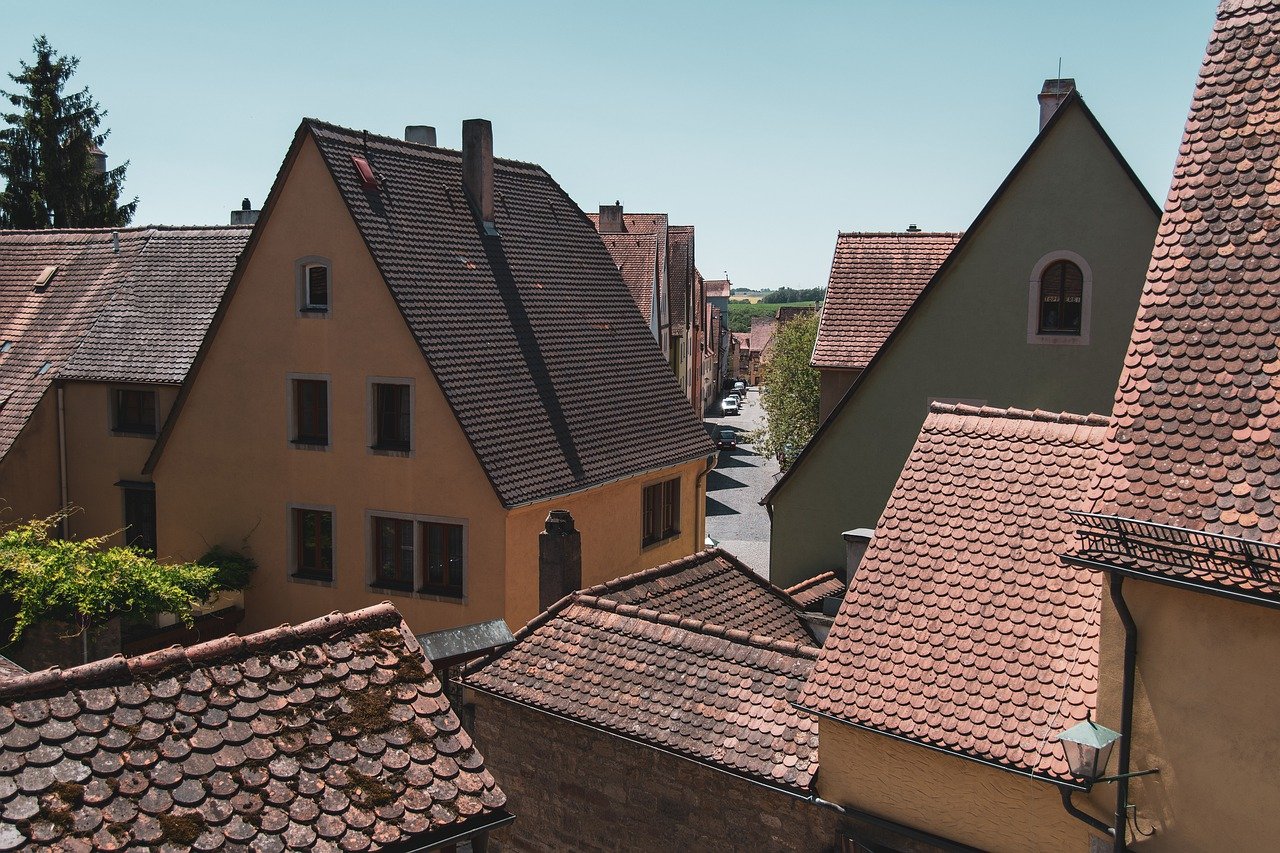
Klingentor
Rothenburg is home to many towers, but the Klingentor, built between 1395 and 1403, is architecturally one of the most intriguing. The gate forms an entrance to the town walls at the foot of St. Wolfgang’s church.
In addition to being a water tower, the copper tank inside the tower fed the town’s fountains when it was not in use. Climbing to the top is possible for a small fee. From there, you can see across town and the Tauber Valley.
Spitalhof and Spitaltor
You can discover an exciting collection of buildings in the picturesque Spitalhof district. It’s not just the Hegereiterhäuschen, a wonderful old house built in 1591, but the massive 16th-century Spital Gate (Spitaltor) also constructed by Master Builder Leonhard Weidmann.
As the last fortification built in the town, Spitaltor bears the Latin inscription, Pax intrantibus, Salus exeuntibus, which translates to “Peace to those who enter, health to those who leave.”
These intimidating fortresses are built in the shape of an eight and feature seven gates, a drawbridge, a portcullis, and sides.
Rothenburg Museum
Rothenburg Museum provides a complete picture of the history of this charming old town thanks to its location in a former Dominican convent. A museum dedicated to the former convent shows off the living quarters of the 16th-century residential community, which was dissolved in 1936.
Other highlights include a well-preserved 13th-century kitchen and 14th-century panels depicting the Passion of Rothenburg. In addition to artifacts that depict the town’s Jewish heritage, the museum’s Judaica Department displays European weapons, including hunting weapons once owned by Frederick the Great.

Hotel Rappen Rothenburg ob der Tauber
This Rothenburg hotel offers a modern restaurant, beer garden, sauna, and free WiFi internet access. Eight minutes will take you to the historic market square from Hotel Rappen.
Hotel Rappen Rothenburg ob der Tauber is a 1603 building with completely renovated rooms with flat-screen TVs and private bathrooms. In addition, some rooms come with balconies.
Every morning, you can grab a bite to eat. Evenings in the restaurant include dishes from Franconia. The restaurant is known for its pancakes.
The Rappen’s beer garden offers a relaxing environment for summertime meals and drinks.
There is no charge for parking for guests, and you can park directly behind Hotel Rappen Rothenburg in a limited number of spaces. A 5-minute walk will lead you to additional parking spaces.
Hotel Reichs-Küchenmeister
The hotel has traditional and modern rooms and spa facilities, valet parking, and a restaurant. In addition, you can find a prime location at the hotel in Old Town.
Whether in the main building or the adjoining building, the rooms of Hotel Reichs-Küchenmeister are located. Televisions, radios, and safes are all included. Hotel Reichs-Küchenmeister features free WiFi in all areas.
You can choose from a rich breakfast buffet each morning. Two smaller dining rooms are included in the traditional restaurant, which also features a terrace in summer.
Walking distance from the train station is the Rotterdam ob der, Tauber. Guests have access to on-site parking. According to independent reviews, this is the part of Rothenburg ob der Tauber that their guests enjoy the most. Notably, the couple-friendly location received a 9.7 for a two-person stay.

